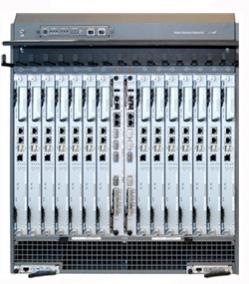 I usually write about the handset business (terminals in wireless-speak) because it is a consumer business and drives, directly and indirectly, a large part of the semiconductor business. But there is another part to the business, base-stations.
I usually write about the handset business (terminals in wireless-speak) because it is a consumer business and drives, directly and indirectly, a large part of the semiconductor business. But there is another part to the business, base-stations.
The largest supplier of wireless networking equipment is Ericsson. Ericsson used to be a big supplier of handsets too, I think #2 behind Nokia at one point. They were a major customer of VLSI for ASIC, at one point making up 40% of VLSI’s business. Then they decided that VLSI was charging them too much and was also using the profit from their Ericsson business to create their own business to supply GSM chipsets. So they decided to buy libraries from Compass and go the COT foundry route. They didn’t know enough about semiconductor design, screwed it up, missed a generation of handsets and were never a force again. Eventually they created a JV with Sony, Sony-Ericsson and a platform company Ericsson Mobile Platforms (EMP) which sold reference designs and software. EMP was never really very successful and after rounds of layoffs was folded in with ST’s wireless business and NXP’s wireless business to create ST-Ericsson. Just a week or two ago Ericsson announced it was selling its half of Sony-Ericsson to Sony and finally was completely out of the handset business at both the device and IP levels. They now focus entirely on base stations (and other non-wireless stuff).
 Two other big players on the wireless network side were Nokia and Siemens. But after the initial buildout of wireless networks they both struggled. They also created a JV, Nokia-Siemens Networks (NSN) which in turn acquired the networking side of Motorola’s business (Google, of course, acquired the handset side). NSN have struggled too, announcing recently that they are exiting the WiMax business and some others, and having a large layoff of 17,000 people (23 percent of the company).
Two other big players on the wireless network side were Nokia and Siemens. But after the initial buildout of wireless networks they both struggled. They also created a JV, Nokia-Siemens Networks (NSN) which in turn acquired the networking side of Motorola’s business (Google, of course, acquired the handset side). NSN have struggled too, announcing recently that they are exiting the WiMax business and some others, and having a large layoff of 17,000 people (23 percent of the company).
The two other big players are Huawei and ZTE, both based in China. Originally they focused on selling cheap hardware but gradually they have built up a reputation for good products and have caused trouble for all the western network companies.
I actually had a front row seat at a little bit of network buildout. Across the street from where I was living this fall some scaffolding went up. But not very much and it seemed a bit pointless, there wasn’t anything where it went, just a blank wall on an office building. Then three antennas appeared and a couple of days were spent connecting them up. Obviously a new base station going in. Then the antennas disappeared. That day they boxed them in, and painted the box so you had to look twice to see anything. About a week later, I suddenly got a text message on my iPhone from AT&T telling me that there was a new base station just gone live on Franklin Street. My service just got a whole lot better, especially for 3G data.








The Quantum Threat: Why Industrial Control Systems Must Be Ready and How PQShield Is Leading the Defense